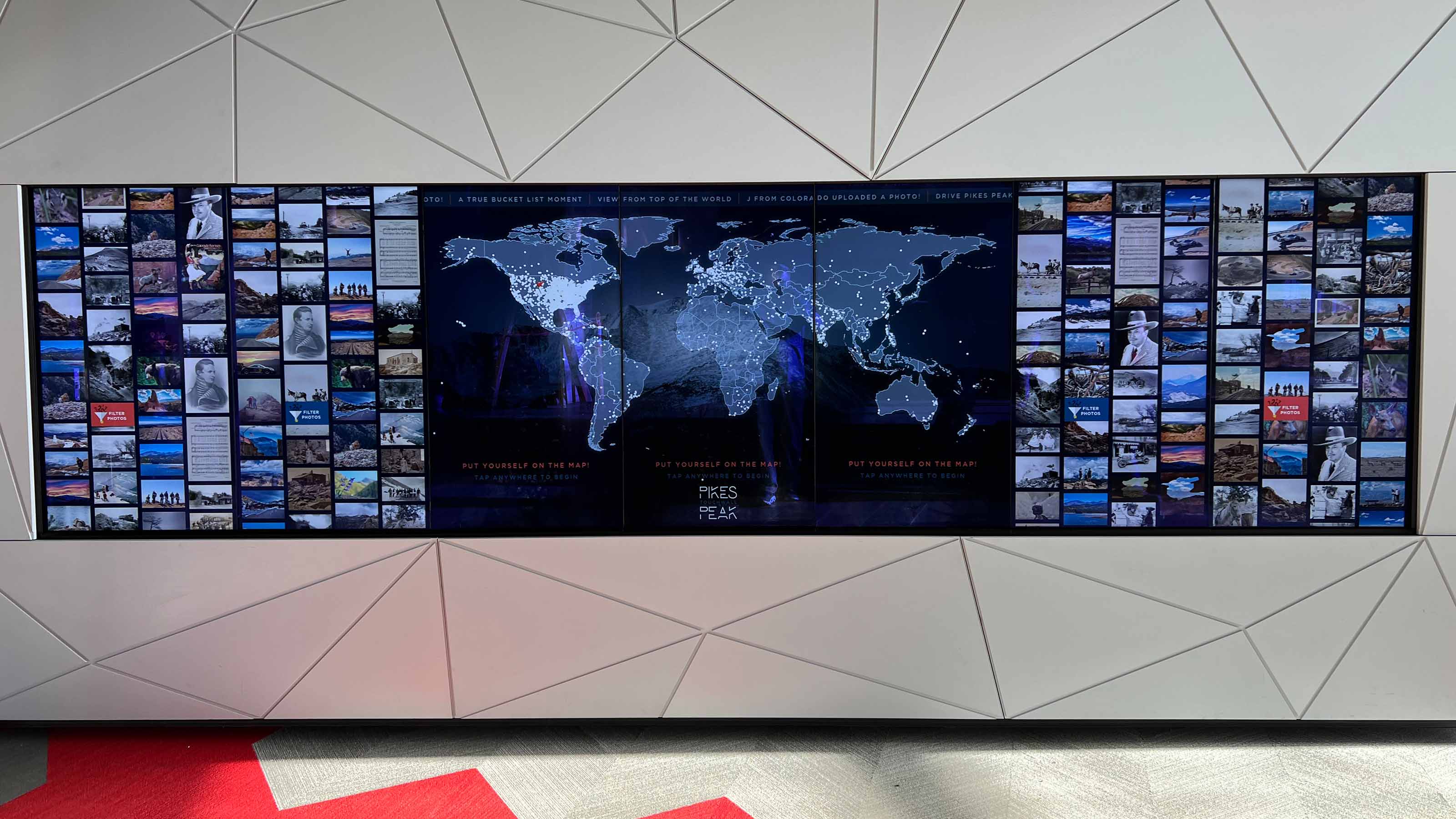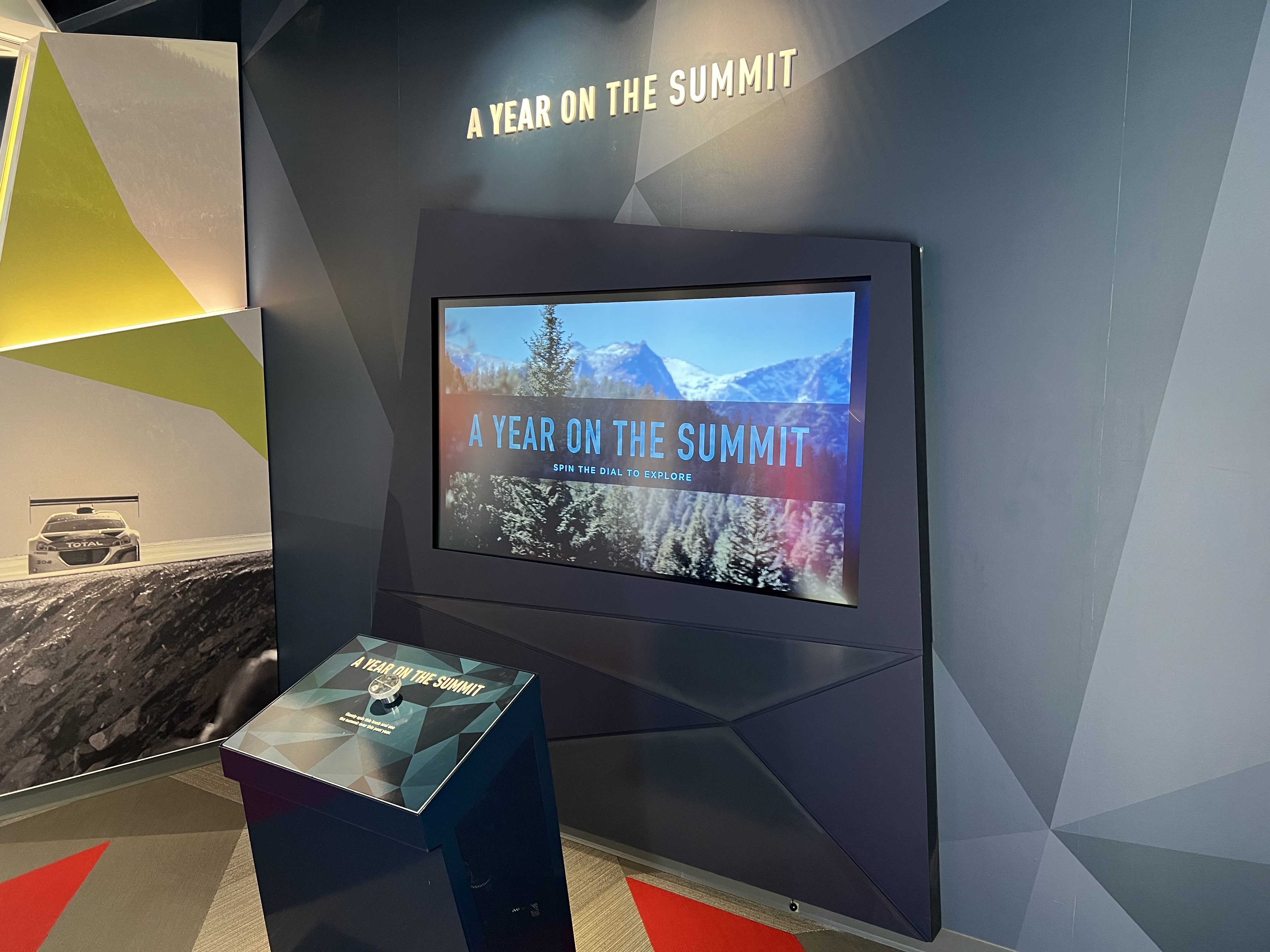The Mountains Are Calling
The new digital signage provides an interactive experience at the Pikes Peak Visitor Center.

Known as both “John of the Mountains” and the “Father of National Parks,” the great John Muir once said, “The mountains are calling, and I must go.” For close to 1 million people in the United States each year, the mountain they go to is Pikes Peak.
Located 15 miles outside of Colorado Springs, CO, Pikes Peak’s 14,115-foot summit is a destination spot in the Rocky Mountains as popular as Niagara Falls and the Grand Canyon. It is one of the most visited mountains in the world.
[Planar Expands North American Presence]
Naturally, as technology advances, so do guests’ expectations, even atop a mountain. The previous Summit House was an old building, built circa 1963, which proved less than ideal in meeting those expectations.
“The old building was well past its useful life,” said Sandy Elliott, parks operation administrator for Pikes Peak–America’s Mountain. “So, the discussion was whether it was a full replacement or a remodel. When we determined it was a replacement, getting specifically into the interpretative and education piece, the goal was to not become static and outdated. We wanted the pieces to be interactive and engaging, but also have the ability to update, refresh, and continually make the space engaging and educational throughout the years—not just that first year we opened.”
The U.S. Forest Service, U.S Army Research Institute of Environmental Medicine, and Colorado Springs Utilities—along with the city of Colorado Springs itself—commissioned the new Pikes Peak Summit Visitor Center. It was a project that was many years in the making: As Elliott explained, the kickoff meeting was in 2012, and they didn’t even break ground until June 2018. The complex, which finally opened in June 2021, not only has a gift shop and new dining areas, but was renovated with advanced AV technologies to provide an interactive, educational experience for guests.
A daily selection of the top stories for AV integrators, resellers and consultants. Sign up below.
“Our whole thought was that we want it to be engaging for all ages," Elliot recalled. "I went on a vacation [right around the initial discussions] and one of the visitor’s centers I went to, it was last updated in 1983. In our first kickoff meeting about the interpretive space, I was like, ‘OK, these are all the don’ts.’”
A Question of Altitude
Bringing the visitor center to life was a team effort. Gallagher & Associates out of Washington, D.C., planned and designed the layout and interpretive exhibits. MODE Systems, based in Castle Rock, CO, came on for the installation. MODE Systems frequently installed Planar displays, but Gallagher & Associates had originally spec’d a different video wall system.
That quickly changed.
“When we went to price out the hardware for this project, we were verifying warranty and as soon as the other manufacturer heard that this was at 14,115 feet, they immediately said they would not warranty that wall,” said Marc Headley, owner, MODE Systems. “That was fine for us because we prefer Planar. That was a chance for us to bump this to a Clarity Matrix project.”
So, why was giving a warranty for 14,000-plus feet not so willingly handed out? “Many electronics require additional cooling at high altitudes in order to stay within their operational parameters,” explained Jeremy Sternhagen, technical marketing manager at Planar. “LEDs, power supplies, and anything that requires cooling can struggle to remain within operating temperatures at high altitudes.
[Editorial: How Digital Signage Can Deliver Better Doctor Visits]
“Planar’s engineering and manufacturing designs and tests products, with thermal performance being one of the highest criteria for success because of the wide array of applications our products will be used in. Our breadth of experience with installations in harsh environments allows us to recommend solutions and implement products with confidence.”
Of course, working on the top of a mountain offers its own unique trials. “The biggest challenge was working at 14,115 feet—the logistics and getting everything up there,” Headley said. “When we built the video wall, they hadn’t finished the roads and surrounding landscaping. We had to use a construction forklift to move the Clarity Matrix monitors all the way around the building to get them anywhere near where the video wall was.”
Engaging Exhibits
The challenging installation paid off. Seven 55-inch Clarity Matrix MultiTouch LCD screens were setup in 7x1 formation in portrait orientation. Elliott’s vision was achieved, as the entire wall is interactive with a touch bezel added after installation, turning the entire video wall into one large touchscreen.
[The Integration Guide to Digital Signage]
Different panels can provide visitors with different experiences. For example, a visitor can enter their address and have a pin dropped and a line drawn on a map illustrating the distance to the Pikes Peak Summit Visitor Center. Others can take a photo and hashtag it on social media to be integrated into one of the displays.
Minus working 14,115 feet above the earth, the installation was easy for Headley and his team. “The video wall was the first exhibit installed,” he explained. “The Clarity Matrix Wall was pretty straightforward. All the hardware, besides the panels themselves, lives in the AV rack. So, your power supplies, all your electronics are in the rack. It’s a pretty simple setup once you have your infrastructure and mounts installed.”
Visitors certainly won’t have trouble finding the display. “The exhibit area is off to one side of the building,” Headley noted. “The video wall is the main attraction you can see from the entryway and grand lobby where everyone congregates. It’s definitely the hero interactive that draws you in.”

As if that wasn’t enough, there’s an additional 75-inch Planar UltraRes X Series 4K LCD display featuring a time lapse of the elevation marker at the summit. A camera takes a picture nearly every second, so guests can track the weather activity over the year. It’s brought to life by a spin browser.
The Pikes Peak Summit Visitor Center is no longer just a stop on an adventure, but a destination. With the typical uptick in summer months—July is annually one of the busiest—the reviews have been very positive.
While fall is her personal favorite time to work the mountain, Elliott won’t deny the success seen in summer months, especially that first July in 2021. “We were still in the midst of a pandemic, but the feedback was phenomenal, so it was a huge success," she said. "We had our challenges, but we made it through, and guest experience was in the 90 percentiles of being the best or great experience for them.”

Wayne Cavadi is the senior content manager of Systems Contractor News. Prior to taking a leap into the Pro AV industry, Wayne was a journalist and content lead for Turner Sports, covering the NCAA, PGA, and Major and Minor League Baseball. His work has been featured in a variety of national publications including Bleacher Report, Lindy's Magazine, MLB.com and The Advocate. When not writing, he hosts the DII Nation Podcast, committed to furthering the stories and careers of NCAA Division II student-athletes. Follow his work on Twitter at @WayneCavadi_2 or the SCN mag Twitter page.
